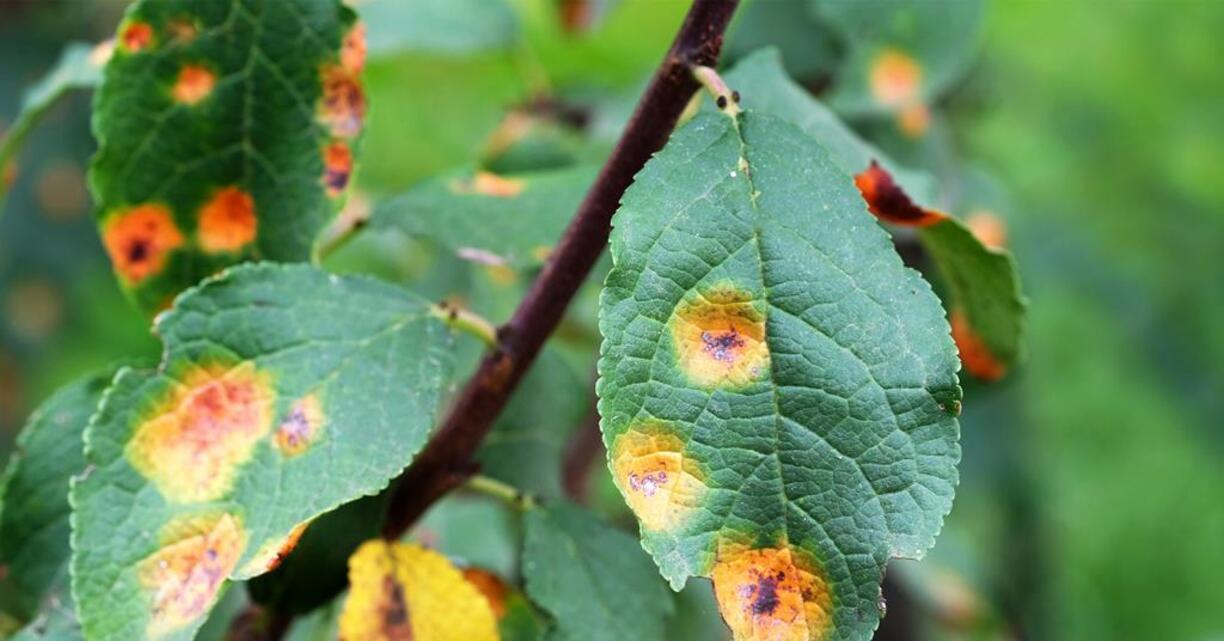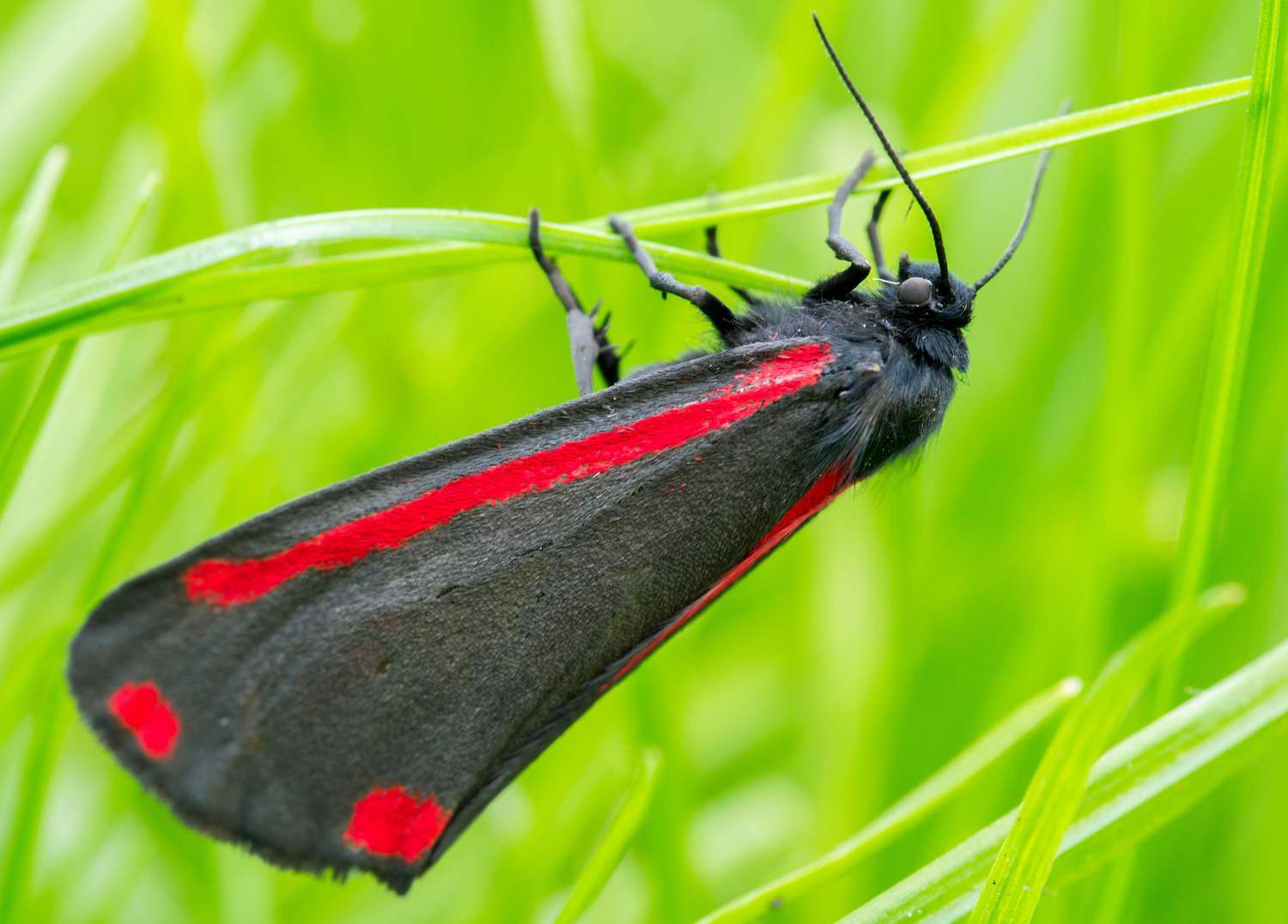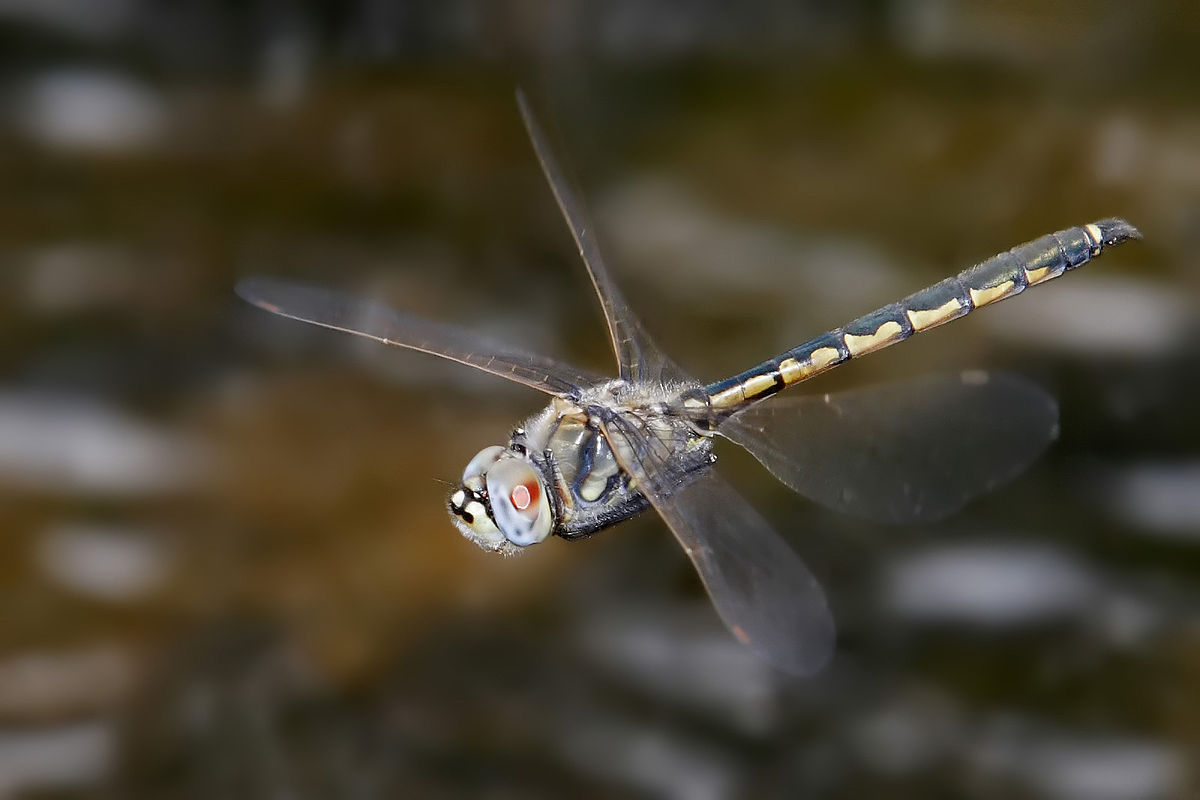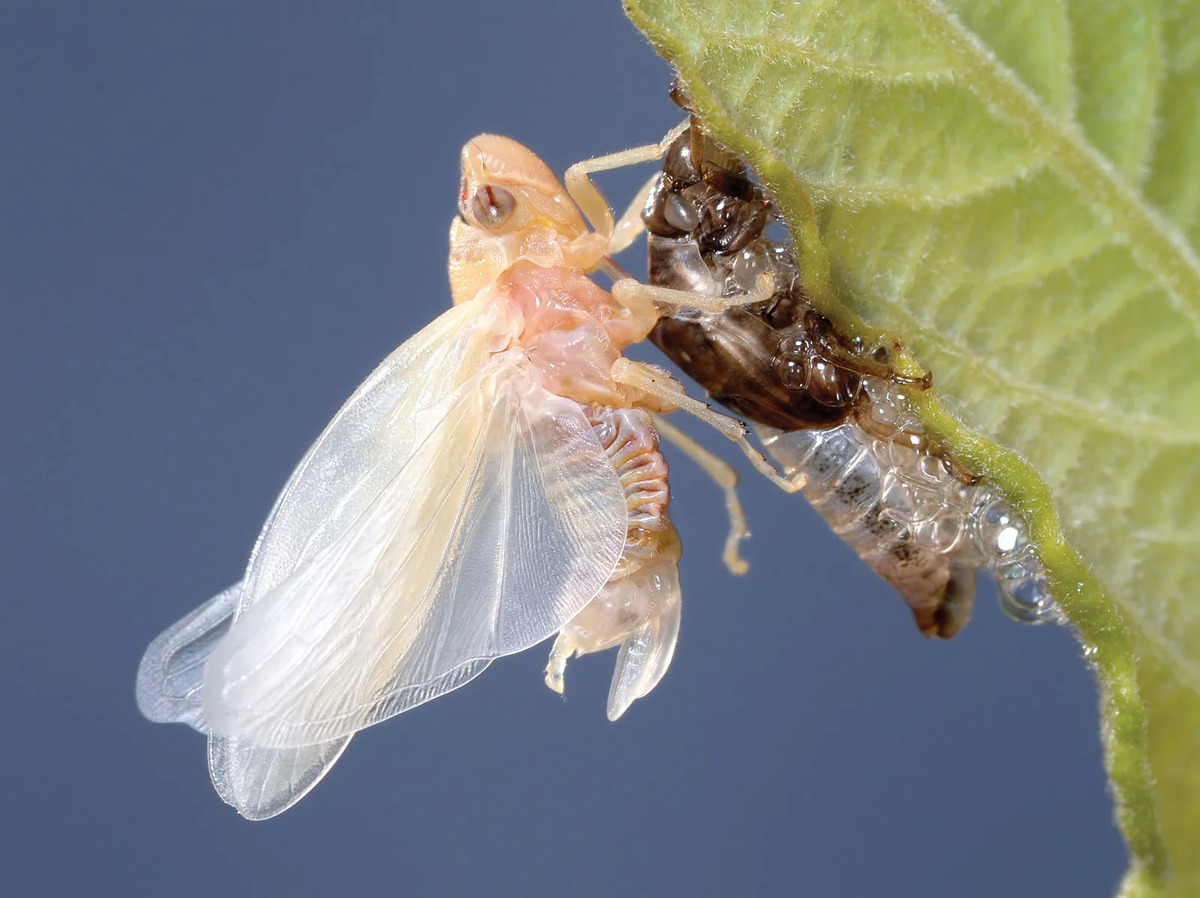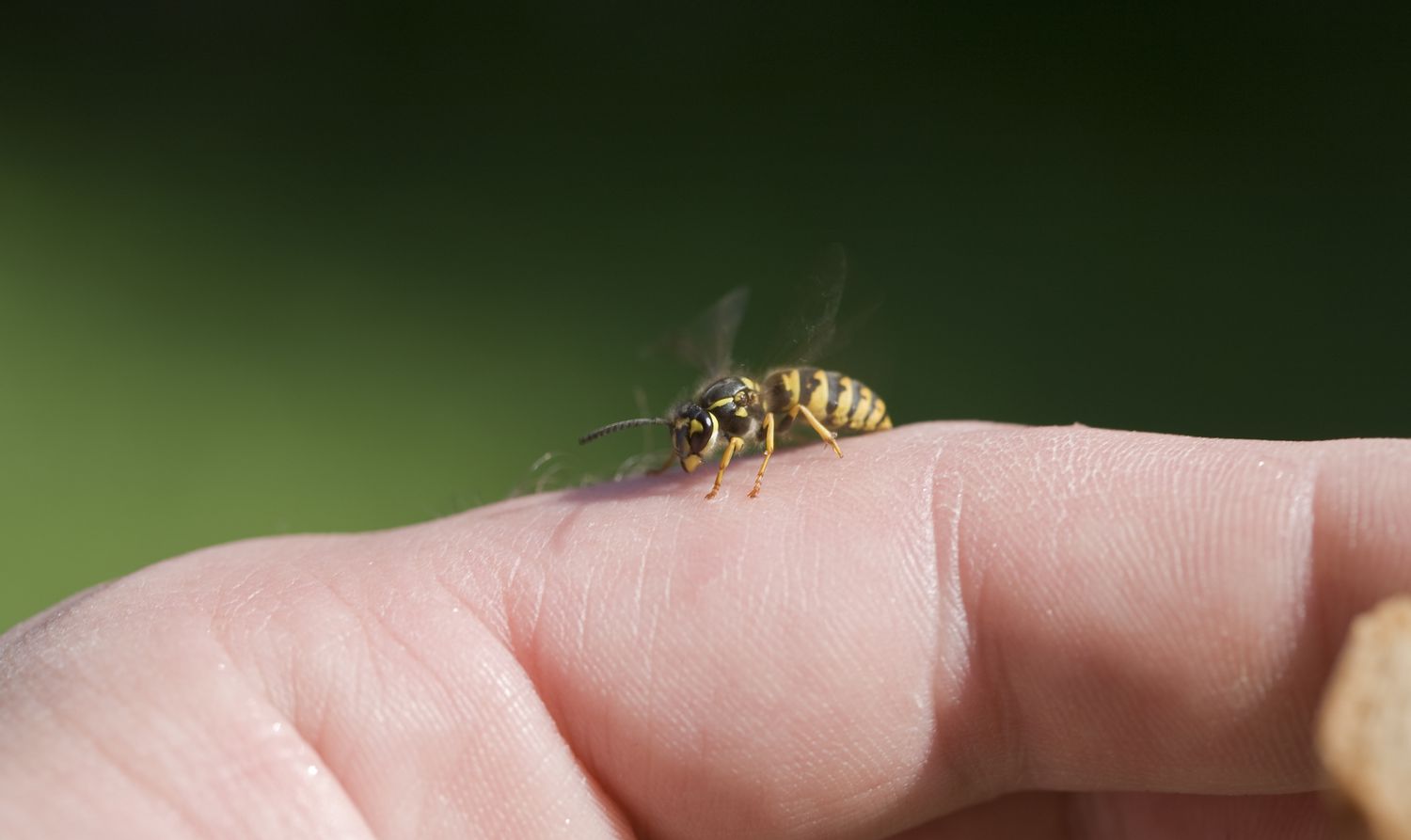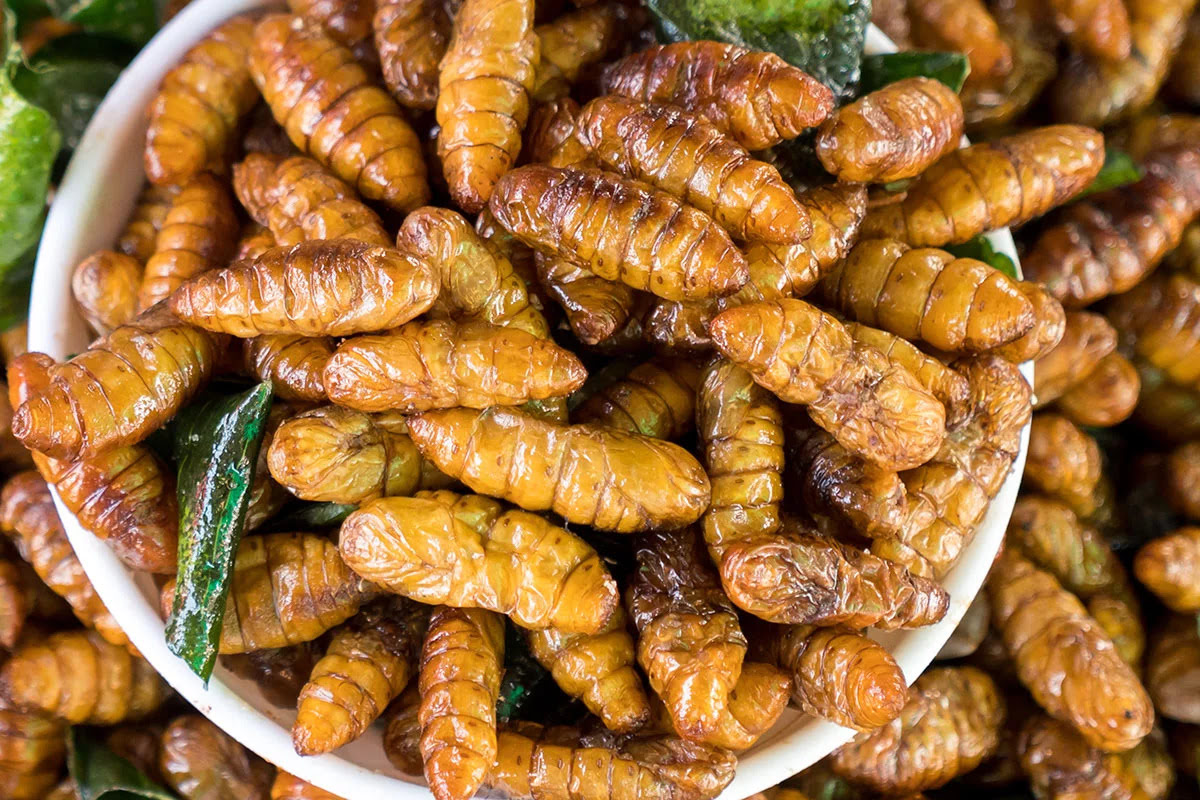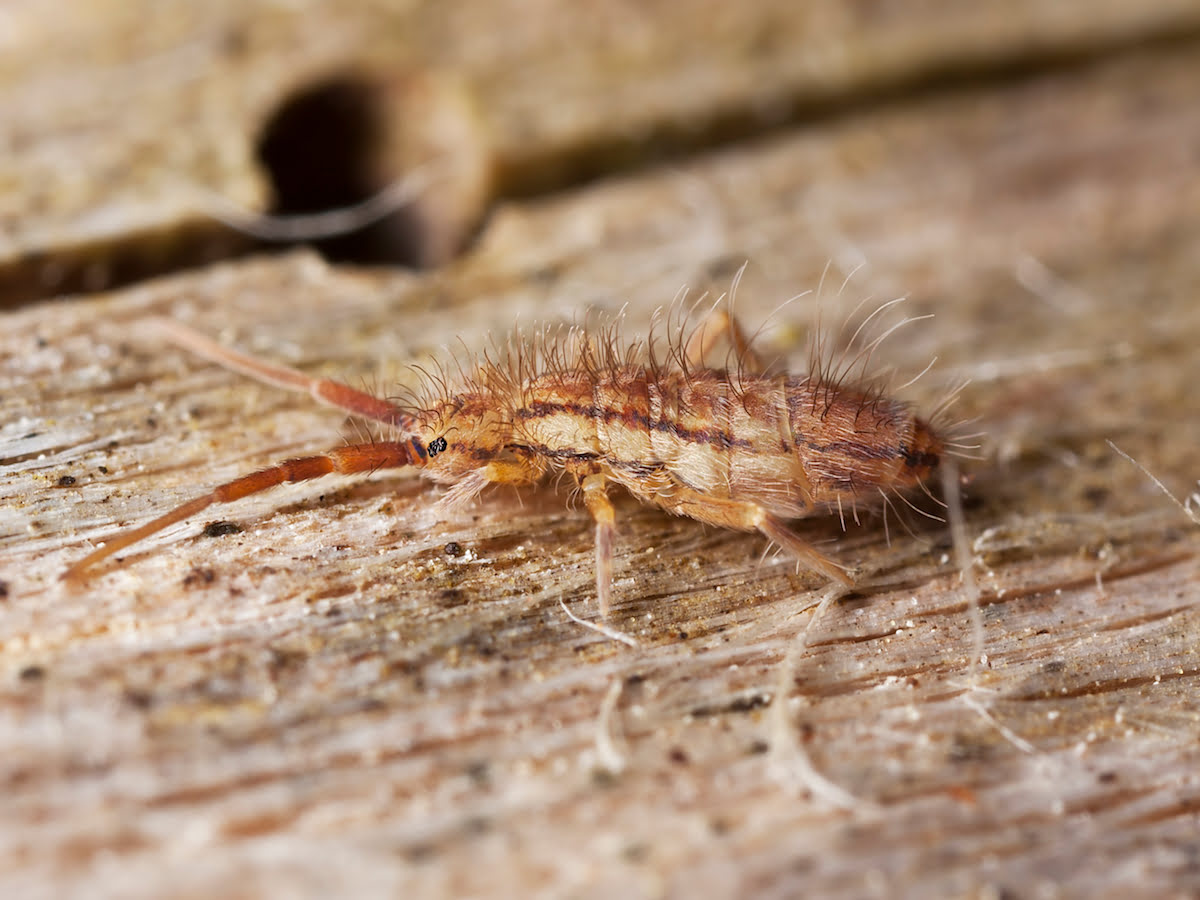Home>Gardening News and Trends>Latest News>What Are Some Aquatic Insects
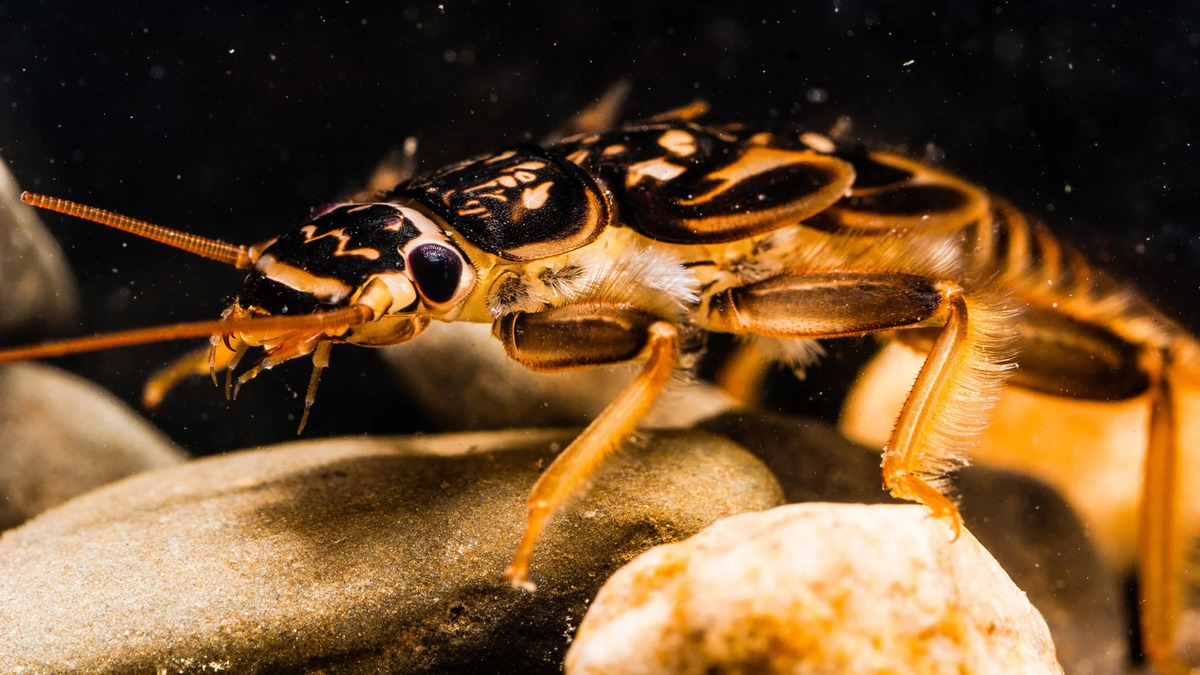

Latest News
What Are Some Aquatic Insects
Modified: January 22, 2024
Discover the latest news on aquatic insects, including fascinating facts and insights into their behavior and habitats. Stay updated and learn more about these intriguing creatures.
(Many of the links in this article redirect to a specific reviewed product. Your purchase of these products through affiliate links helps to generate commission for Chicagolandgardening.com, at no extra cost. Learn more)
Table of Contents
Introduction
Aquatic insects, also known as water bugs or water insects, play a crucial role in freshwater ecosystems. These fascinating creatures have adapted to thrive in aquatic environments, utilizing various physical and behavioral characteristics that allow them to survive and reproduce in water. From their diverse range of shapes and sizes to their incredible life cycles and adaptations, aquatic insects have captivated the curiosity of scientists and nature enthusiasts alike.
Found in lakes, rivers, ponds, and even temporary bodies of water like puddles, aquatic insects are an integral part of the food web. They serve as a vital food source for fish, amphibians, and other invertebrates, while also playing important roles in nutrient cycling and water quality regulation.
Throughout this article, we will explore the characteristics, life cycles, types, adaptations, and importance of aquatic insects. We will also discuss the threats they face and the efforts being made to conserve their populations. So, let’s dive into the fascinating world of aquatic insects and discover the wonders that lie beneath the water’s surface.
Characteristics of Aquatic Insects
Aquatic insects have evolved a range of adaptations that allow them to thrive in water environments. These adaptations enable them to effectively navigate and exploit their aquatic habitats. Let’s explore some of the key characteristics of aquatic insects:
- Body structure: Aquatic insects possess streamlined bodies, allowing for efficient movement through water. Their bodies are often elongated and have flattened undersides to minimize resistance in the water.
- Respiration: Unlike their terrestrial counterparts, aquatic insects obtain oxygen through various mechanisms. Some species have specialized gills, while others rely on unique structures, such as air stores held beneath their wings or streamlined respiratory tubes called tracheae.
- Feeding mechanisms: Aquatic insects have diverse feeding habits. They may be filter feeders, grazing on algae and other small organisms, or predators, preying on smaller aquatic invertebrates. Some species are even scavengers, feeding on decaying organic matter.
- Adhesive properties: Many aquatic insects have adapted unique structures on their legs or bodies, allowing them to attach to surfaces in fast-flowing water. This adaptation helps them maintain their position and withstand the force of the currents without being swept away.
- Ability to detect prey: Aquatic insects have well-developed sensory systems to locate their prey. They rely on various mechanisms such as vision, touch, and chemoreception to detect the movements and presence of potential food sources in their environment.
These characteristics are just a glimpse into the remarkable adaptations that enable aquatic insects to thrive in water habitats. By understanding these features, scientists can gain insights into the complex ecological relationships that exist within freshwater ecosystems.
Life Cycle of Aquatic Insects
The life cycle of aquatic insects is diverse and fascinating, with several stages of development that allow them to adapt to their aquatic environment. This life cycle generally consists of four main stages: egg, larva, pupa, and adult. Let’s explore each of these stages:
- Egg: Aquatic insects typically lay their eggs in or near water. The eggs can be attached to vegetation, rocks, or submerged structures. Depending on the species, the size and shape of the eggs can vary. Some aquatic insects lay their eggs individually, while others deposit them in clusters or masses.
- Larva: Once the eggs hatch, aquatic insects enter the larval stage. Larvae, also known as nymphs, are adapted for underwater life. They have specialized structures for respiration, feeding, and locomotion. Larvae undergo several molts as they grow, shedding their exoskeleton and developing larger ones.
- Pupa: After the larval stage, many aquatic insects go through a transformative stage called the pupal stage. During this stage, the larvae encase themselves in a protective structure called a pupal case or cocoon. Inside this case, they undergo significant changes and transform into their adult form.
- Adult: Once the metamorphosis is complete, the aquatic insects emerge from their pupal cases as adults. The adult stage is usually the only stage that spends a significant amount of time outside the water. However, some species may remain partially aquatic throughout their lives. Adults engage in reproduction, dispersal, and feeding, depending on the specific species.
It’s important to note that the duration of each stage can vary greatly depending on the species, environmental conditions, and other factors. Some aquatic insects complete their life cycle within a few weeks, while others may take several years.
The life cycle of aquatic insects is not only fascinating but also plays a crucial role in the ecosystem. Understanding their life cycles can help scientists monitor population dynamics, assess environmental health, and implement conservation strategies to protect these unique creatures.
Types of Aquatic Insects
Aquatic insects encompass a wide variety of species, each adapted to specific aquatic habitats and exhibiting unique characteristics. Here are some common types of aquatic insects:
- Mayflies: Mayflies, also known as Ephemeroptera, are well-known for their short adult lifespan. They are characterized by their delicate bodies and long, filamentous tails. Mayflies are important indicators of freshwater quality and are used by scientists to assess the health of ecosystems.
- Caddisflies: Caddisflies, or Trichoptera, are known for the protective cases they build during their larval stage using silk and materials from their surroundings, such as twigs, stones, or tiny shells. These cases serve as a defense mechanism against predators and camouflage the larvae.
- Dragonflies and Damselflies: Dragonflies and damselflies, collectively known as Odonata, are characterized by their large eyes, elongated bodies, and distinctive double wings. They are considered highly skilled predators and are known for their exceptional flying abilities.
- Beetles: Aquatic beetles, or Coleoptera, are one of the most diverse groups of insects. They have specialized adaptations for life in water, such as streamlined bodies, paddle-like legs for swimming, and air stores beneath their wings for respiration.
- Water bugs: Water bugs, including the families Belostomatidae and Gerridae, are adept at living on or below the water surface. They have long, slender bodies and hydrophobic legs that enable them to walk or glide on the water’s surface tension.
- Midges: Midges, or Chironomidae, are small, mosquito-like insects that are often abundant in aquatic habitats. They have distinct feathery antennae and are an essential food source for many aquatic organisms.
These are just a few examples of the diverse range of aquatic insects found in freshwater ecosystems. Each type plays a unique role in their respective habitats, contributing to the ecological balance and functioning of aquatic environments.
Importance of Aquatic Insects
Aquatic insects play a critical role in freshwater ecosystems, contributing to various ecological processes and providing numerous benefits. Here are some key reasons why aquatic insects are important:
- Indicators of water quality: Aquatic insects are excellent indicators of water quality. Their presence or absence, as well as their diversity and abundance, can provide valuable insights into the health of aquatic ecosystems. Changes in their populations can indicate pollution, habitat degradation, or other environmental disturbances.
- Food source: Aquatic insects serve as a vital food source for many other organisms. They form the base of the food chain, providing nutrition for fish, amphibians, reptiles, birds, and even mammals. Without the abundance and diversity of aquatic insects, these higher trophic levels would struggle to survive.
- Ecological roles: Aquatic insects play important ecological roles. They contribute to nutrient cycling by consuming and decomposing organic matter, helping to break it down and release nutrients back into the ecosystem. Some species also assist in pollination of water-based plants and contribute to the dispersal of seeds.
- Water quality regulation: Aquatic insects, particularly filter feeders, help maintain water quality by consuming excess algae and organic matter. This process helps prevent eutrophication and keeps the water clear and oxygenated for other organisms.
- Predator control: Aquatic insects, such as dragonfly larvae and water bugs, act as natural predators, preying on smaller organisms and contributing to population control. They help control the population of harmful or invasive species, maintaining balance within the ecosystem.
- Recreational value: Aquatic insects add value to recreational activities such as fishing and birdwatching. Anglers frequently use insect imitations as bait to attract fish, while birdwatchers appreciate the diverse bird species that rely on aquatic insects as a food source.
The importance of aquatic insects extends beyond their immediate ecological roles. They have cultural, educational, and aesthetic value, providing opportunities for research, education, and appreciation of the natural world.
Adaptations of Aquatic Insects
Aquatic insects have evolved various adaptations that enable them to thrive in their aquatic habitats. These adaptations allow them to overcome the challenges posed by their environment and exploit the available resources. Here are some notable adaptations of aquatic insects:
- Air stores: Many aquatic insects have specialized adaptations to obtain oxygen. Some species trap air bubbles on their body or beneath their wings, enabling them to extract oxygen while submerged.
- Gills and tracheae: Aquatic insects have developed different structures for respiration. Some species have gills, which are feathery or filamentous structures through which they extract oxygen from the water. Others have modified tracheae or spiracles that allow them to extract oxygen from air pockets or from the water’s surface.
- Camouflage: Aquatic insects employ various camouflage strategies to blend into their surroundings and avoid detection by predators. They may have coloration or patterns that mimic their environment, making it difficult for predators to spot them.
- Streamlined bodies: Aquatic insects often have elongated, streamlined bodies that reduce drag in the water. This body shape helps them move efficiently, minimizing energy expenditure during swimming or searching for food.
- Adhesive structures: Some aquatic insects possess specialized adaptations that allow them to cling to surfaces in fast-flowing water. They may have small hook-like structures on their legs or possess suction discs that enable them to attach to rocks or vegetation, helping them stay in place amidst strong currents.
- Surface tension exploiters: Aquatic insects like water striders have adapted to take advantage of the surface tension of the water. Their long, slender legs distribute their weight over a larger area, allowing them to glide on the water’s surface without sinking.
- Filter feeding adaptations: Species that engage in filter feeding have adaptations that enable them to collect and filter out tiny particles of food from the water. They possess specialized mouthparts or appendages that trap suspended particles and extract nutrients.
These adaptations highlight the incredible diversity and ingenuity of aquatic insects. By adapting to their unique environments, these insects have not only survived but thrived in the dynamic world of freshwater ecosystems.
Threats to Aquatic Insects
Aquatic insects face various threats that pose significant risks to their populations and the overall health of freshwater ecosystems. These threats can have far-reaching impacts on the delicate balance of aquatic biodiversity. Here are some major threats to aquatic insects:
- Habitat destruction: The destruction and alteration of aquatic habitats, such as wetlands, streams, and rivers, have a significant impact on aquatic insects. Pollution, urbanization, agriculture, and dam construction can lead to the loss or degradation of these habitats, limiting the availability of suitable breeding and feeding grounds for insect populations.
- Pollution: Pollution, including sedimentation, chemical pollutants, and excessive nutrient runoff, negatively affects aquatic insects. It can impair their ability to obtain oxygen, disrupt their feeding and reproductive behaviors, and contaminate their food sources. Pollutants can also accumulate in their tissues, causing long-term effects on their survival and reproduction.
- Invasive species: Invasive species can outcompete native aquatic insects for resources, disrupt food webs, and alter the dynamics of ecosystems. Invasive predators or plant species can prey upon or displace native insect populations, leading to significant declines in their numbers.
- Climate change: The impacts of climate change, such as rising temperatures, altered precipitation patterns, and changing water levels, can have profound effects on aquatic insects. Climate change can disrupt the synchrony between insect emergence and the availability of food sources, reducing reproductive success. It can also alter the distribution and composition of aquatic habitats, further exacerbating the challenges faced by these insects.
- Overexploitation: Aquatic insects, particularly those used as bait for fishing, may be overexploited. The excessive collection of these insects can disrupt their populations and the ecosystems they inhabit. Proper regulations and sustainable practices should be implemented to ensure their conservation.
It is important to recognize and address these threats to safeguard the health and diversity of aquatic insects. Conservation efforts, such as habitat restoration, pollution reduction, invasive species management, and climate change mitigation, are crucial for the long-term survival of these essential components of freshwater ecosystems.
Conservation of Aquatic Insects
The conservation of aquatic insects is vital for the maintenance of healthy freshwater ecosystems and the long-term sustainability of our planet. Here are some key conservation efforts aimed at protecting these important aquatic creatures:
- Habitat preservation and restoration: Conserving and restoring aquatic habitats is crucial for the survival of aquatic insects. Efforts should focus on protecting wetlands, rivers, and streams from pollution, urbanization, and habitat destruction. Restoring degraded habitats can provide essential breeding and foraging areas for these insects.
- Pollution reduction: Implementing effective pollution control measures can help mitigate the impacts of contaminants on aquatic insects. This includes managing agricultural runoff, reducing industrial pollution, and enhancing wastewater treatment systems. By minimizing pollution, we can ensure healthier and more resilient freshwater ecosystems.
- Invasive species management: Managing and controlling invasive species that threaten native aquatic insects is essential for conservation efforts. This involves strategies such as monitoring and early detection, implementing eradication or control measures, and implementing strict regulations on the trade and release of invasive species.
- Climate change adaptation: Addressing the impacts of climate change is crucial for the survival of aquatic insects. This includes efforts to reduce greenhouse gas emissions and implement adaptation strategies. Protecting and restoring natural buffer zones along rivers and streams can help mitigate the effects of rising temperatures and changing hydrological patterns.
- Sustainable practices: Promoting sustainable practices in activities such as fishing and agriculture can minimize negative impacts on aquatic insects. This includes practicing catch-and-release fishing, avoiding overfishing of insect prey species, and implementing environmentally friendly farming practices that reduce chemical inputs and minimize water pollution.
- Education and awareness: Raising awareness about the importance of aquatic insects and their conservation is key to garnering public support. Educational programs, public outreach initiatives, and citizen science programs can engage people in monitoring and conservation efforts, fostering a sense of responsibility towards these vital creatures.
The conservation of aquatic insects requires a holistic approach that combines scientific research, policy interventions, and community participation. By implementing these conservation measures, we can ensure the preservation of aquatic insect populations and safeguard the health of our freshwater ecosystems for future generations.
Conclusion
Aquatic insects are fascinating creatures that have adapted to thrive in diverse freshwater habitats. Their remarkable characteristics, life cycles, and adaptations make them integral components of freshwater ecosystems. From their role as indicators of water quality to their importance as a food source for other organisms, aquatic insects play crucial ecological roles.
However, aquatic insects face various threats, including habitat destruction, pollution, invasive species, and the impacts of climate change. These threats put their populations at risk and have detrimental effects on freshwater ecosystems as a whole. To address these challenges, conservation efforts are essential.
Conserving aquatic insects involves preserving and restoring their habitats, reducing pollution, managing invasive species, and adapting to the impacts of climate change. Sustainable practices, education, and awareness are also vital for ensuring the long-term survival of these important creatures.
By understanding and appreciating the value of aquatic insects, we can work towards their conservation and contribute to the health and resilience of freshwater ecosystems. The preservation of these incredible creatures is not only crucial for their well-being, but for the overall balance and biodiversity of our planet.
